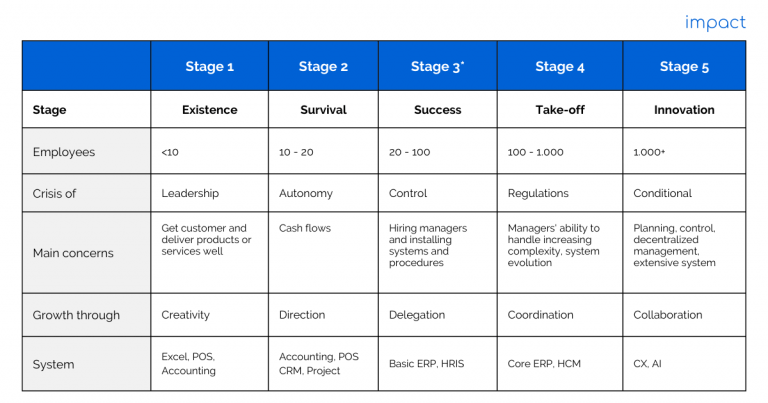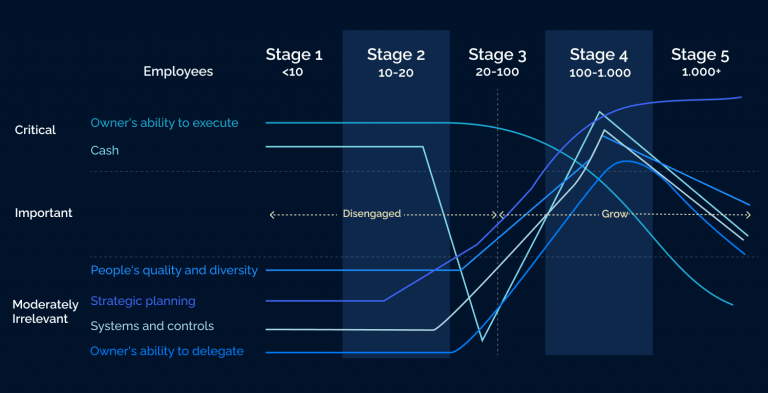Best ERP Software for Indonesian Businesses in 2025
There is no such thing as the best ERP software. ERP exists to automate and…
Nindy
July 9, 2025In simple terms, Digital Transformation is the adoption of technology in a company. However, we believe it’s much more than that. To understand what Digital Transformation is deeper, let’s take an in-depth look at what problems businesses actually face.
Growing a business is hard. 20% of new businesses fail during the first 2 years, 50% fail during the first 5 years, 70% fail during the first 10 years. Only 25% make it to 15 years or more.
However, 97% of Indonesian workforce work for new businesses, causing employment problems.
There are 4 main functional areas of businesses: Marketing, Finance, Operations, Human Resources.
The goals of Marketing departments should be to:
Through ways that are:
However, many marketing departments are too busy with short-term selling through actions that do not bring much impact based on feelings and luck because:
The goals of Finance departments should be to:
Through ways that are repeatable, optimum, and data-driven.
However, many finance departments are too busy with financial data preparation and administrative work because
The goals of Operations departments should be to:
Through ways that are repeatable, optimum, and data-driven.
However, many Operations departments are too busy with only delivering products and services because
The goals of Human Resources departments should be to:
Through ways that are repeatable, optimum, and data-driven.
However, many Human Resources departments are too busy with administrative work in areas like recruitment, payroll, and workforce management because
How do we solve these problems so that companies can grow? To understand it better, let’s take a look at what “business growth” really means.

According to Harvard Business Review, new business growth is divided into 5 stages.
Stage 1 is called the Existence Stage, where companies are busy trying to exist, usually with less than 10 employees. There is a crisis of leadership and the owner’s creativity to get customers and deliver products and services well is key to move on to the next stage. Usually Excel, POS, or accounting systems are enough for Stage 1 companies.
Stage 2 is called the Survival Stage, where companies are busy trying to survive, usually with 10-20 employees. There is a crisis of autonomy and the key to growth is through direction from the owner to get positive cash flows. Usually Stage 2 companies require accounting, POS, CRM, or project management tools to optimize productivity.
Stage 3 is called the Success Stage, where companies have found their identity and are comfortable with its cash flows, usually with 20 – 100 employees. There is a crisis of control and the key to growth is through proper work delegation which involves hiring managers and installing systems and procedures. At this stage, integration between divisions and automation are crucial and this is where companies start needing ERP and HR systems.
Stage 4 is called the Take-off Stage, where companies already have different divisions and procedures in place, but they are far from perfect. The number of employees typically range from 100 to 1,000, depending on the industry and the company structure. Productivity is low, lots of manual work, fraud, lack of data to identify business problems accurately, and there is no unity among the different divisions. At this stage, managers’ ability to handle increasing complexity as well as systems and procedures are crucial, and companies can move on to the next stage through coordination. At this stage, ERP and HR systems become more crucial, and some system customizations are needed to fully support growth.
Stage 5 is called the Resource Maturity Stage, where companies have different divisions and proper procedures, usually with more than 1,000 employees. The problems companies face vary widely depending on the industry, market conditions, business model, company structure, and what they did during Stage 4. However, a lot of companies have difficulties innovating. Their main concerns are generally the same, which are planning, control, management decentralization, and more extensive systems and procedures. At this stage, ERP and HR systems become even more crucial and much customizations are generally needed.

For companies at Stages 1 and 2, the owner’s ability to execute and cash flows are crucial in ensuring the companies’ survivability, while everything else is moderately irrelevant.
Upon entering Stage 3, people’s quality and diversity, strategic planning, systems and controls, as well as owner’s ability to delegate becomes important while cash flows are not as important anymore.
Upon entering Stage 4, the owner’s ability to execute continues to slowly become less important while everything else becomes critical.
Upon entering Stage 5, strategic planning becomes critical since companies are not as flexible as before, and everything else becomes less important.
Companies have to go through transformations in order to successfully move on to the next stage. If companies do not go through transformations, or if they do it poorly, it will affect them at the next stage, or even worse, they are not able to move on to the next stage at all. This is the reason why business owners often feel like they’ve done their best but their companies still can’t grow.
Majorities of companies that close down fail at Stages 1 and 2, while companies at Stages 3 and 4 have difficulties growing due to operational inefficiencies, lack of proper systems and procedures, bad hiring, and bad strategic planning.
A lot of long-time companies are stuck at Stages 3 and 4, and many business owners decided to accept that “that’s how business is,” and ignored the problems since they are comfortable with their cash flows and standard of living.
However, they become bad at adjusting to changes in market conditions, causing problems when it is time for the next generation to take over. This is where Digital Transformation comes in.
Let’s gather the facts.
From the facts, we can learn three things:
However, we know that there are at least 3 similarities between the different types of transformations:
In order to achieve a proper transformation, technology undoubtedly plays a crucial role and we think that true transformation can’t happen without technology, because there will always be human errors and unpredictability when companies rely too much on humans (also, hiring and retaining great people is very hard and takes a long time).
Therefore, our definition of Digital Transformation is:
“A continuous process by growth-seeking companies through solving the right problems at the right stages with the help of technology.”
We believe there is so much potential for Indonesian businesses to grow if businesses receive the right data, tools, and guidance.
Impact Insight Team
Impact Insights Team is a group of professionals comprising individuals with expertise and experience in various aspects of business. Together, we are committed to providing in-depth insights and valuable understanding on a variety of business-related topics & industry trends to help companies achieve their goals.
See how our ERP provides better value.
Speak with our consultant to explore how we can improve your accounting, processes, and people.
